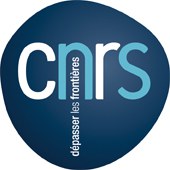


|

|
The celebrated Beilinson-Bernstein localisation theorem asserts that there is an equivalence of categories between representations of a semisimple complex Lie algebra with a prescribed central character and certain sheaves of D-modules on the flag variety of the corresponding algebraic group. There have been recent developments in p-adic representation theory, due to Ardakov-Wadsley and Patel-Schmidt-Strauch among others, that proved and then used p-adic analytic versions of the Beilinson-Bernstein theorem to study geometrically certain p-adic representations of p-adic groups. In this talk, we'll explain how to obtain an analogue of these p-adic Beilinson-Bernstein localisation results for quantum groups.
Slides
For a complex simple Lie algebra $\mathfrak{g}$, finite-dimensional representations of the associated quantum loop algebra form an interesting monoidal abelian category, which has been studied from various perspectives. Related to the fundamental problem of determining the characters of irreducible representations in this category, one can consider an analog of Kazhdan-Lusztig polynomials in a purely algebraic way. When $\mathfrak{g}$ is of simply-laced type, the positivity of these polynomials follows from the geometric theory of Nakajima's quiver varieties, which is not applicable to non-simply-laced cases. In this talk, we show that the same positivity holds for non-simply-laced type as well by establishing a connection between non-simply-laced type and ''unfolded'' simply-laced type. In addition, we newly find that an analog of Kazhdan-Lusztig conjecture holds for several cases in non-simply-laced type. This is a joint work with David Hernandez, Se-jin Oh, and Hironori Oya.
Slides
We consider a complex reductive algebraic group G, and a Borel subgroup B of G. It is now well known that the category of perverse sheaves on the flag variety G/B has an important representation theoretic interpretation, (meaning here that it is equivalent to some category of representations of some appropriate object). It is however an important topic in geometric representation theory to try understand this category "geometrically" (i.e. working only on the geometric side). In 2018, Bezrukavnikov and Riche, building on work of Soergel, Bezrukavnikov-Yun (among others), obtained a completely general description of the category of perverse sheaves on G/B by geometric means, as an explicit category of modules over an explicitely determined ring. Their work requires the use of a canonical "monodromy action", but they only considered unipotent monodromy, sufficient for their purpose. My thesis goal was trying to understand what happen for more general monodromies. In this talk, I will first try to define perverse monodromic sheaves, and explain the strategy used in order to try to generalise the results of Bezrukavnikov-Riche.
Slides
Little is known about the smooth mod-$p$ representations of (the group
of rational points of) a $p$-adic reductive group $G$. One big difference with
the better understood theory of complex smooth representations of $G$ is the
lack of projective objects and the fact that the functor of invariants -even
for small open subgroups of $G$- is not exact for smooth mod-$p$ representations.
It therefore seems natural to study them in the derived setting.
The parabolic induction functor is exact and hence extends to the (unbounded)
derived categories. The question about the existence of a left adjoint leads to
the problem of understanding infinite derived products.
In this talk I will present an approach to deal with derived products and how to
deduce the existence of said left adjoint. The remaining time I will use to
collect what is explicitly known about it.
Slides
The classical Springer correspondence between representations of a Weyl group and cohomology of Springer fibres was reformulated in terms of perverse sheaves on the nilpotent cone of a Lie algebra by Borho and Macpherson. In subsequent works of Ginzburg, Kazhdan and Lusztig, techniques of convolution algebras was developed, which together with techniques of perverse sheaves applied to Z-graded Lie algebras led to a geometric parametrisation of simple modules for affine Hecke algebras and several structural results on their categories of finite-dimensional modules.
This talk concerns perverse sheaves on a simple Lie algebra equipped with a Z/mZ-grading, first studied by Lusztig and Yun. I will explain how the perverse sheaves on these Lie algebras can be used to study the representation theory of degenerate double affine Hecke algebras (dDAHAs). Especially, there is a Deligne-Langlands parametrisation for simple modules in the category O of the dDAHAs. We will also explain a conjectural derived equivalence between categories O of a dDAHA with different parameters.
Slides
The \textit{Cox ring} of an algebraic variety (satisfying some natural conditions) is a very rich invariant. It was introduced by Cox in 1995 for the study of \textit{toric varieties}, and then generalized to normal varieties by Arzhantsev, Bechtold and Hausen. Later, Hu and Keel discovered that the $\mathbb{Q}$-factorial projective normal varieties with a finitely generated Cox ring define a class of varieties whose birational geometry is particularly well understood. They called these varieties the \textit{Mori Dream Spaces}. Today, a Mori Dream Space (MDS) is simply a normal algebraic variety whose Cox ring is finitely generated. A first natural problem is to find natural conditions for a normal algebraic variety to be an MDS. A second problem is to describe the Cox ring of an MDS by generators and relations. These two important problems turn out to be rather hard.
Among varieties with group action, a particularly well understood class consists of normal varieties of \textit{complexity} $\leq 1$: a connected reductive group is acting and the minimal codimension by a Borel subgroup is $\leq 1$. The normal varieties of complexity zero are the \textit{spherical varieties} (e.g. a toric variety is spherical). In 2007, Brion proved that spherical varieties are MDS, and gave a description of their Cox ring by generators and relations. A normal variety of complexity one is an MDS if and only if it is a rational variety. This provides a natural class of MDS with group action for which the second problem has only been solved in particular cases.
In this talk, we will detail the construction of the Cox ring of a normal variety, and explain its importance in algebraic geometry. Then, we will describe the Cox ring of a complexity one almost homogeneous variety (i.e. it is normal with a dense orbit), together with the methods developed to obtain this description.
Slides
The theory of D-modules on rigid analytic varieties was introduced by K. Ardakov and S. Wadsley. Not only is this considered as a geometric way to study p-adic representations, but the theory itself contains many interesting questions. In this talk I will talk about my recent work focusing on the dimension of coadmissible equivariant D-modules. I will also explain how to define weak holonomicity of D-modules for the case of analytic flag varieties and give some examples which arise from modules in the BGG category O.
Slides
In positive characteristic, a representation of an algebraic group G gives rise to a restricted representation of Lie(G). Restricted representations are more connected to the representation theory of the "first Frobenius kernel" of G - a certain infinitesimal group scheme - than that of G itself. One can deform the so-called "distribution algebra" of this first Frobenius kernel in some way to obtain a family of associative algebras. The irreducible representation theory of these algebras totally captures the irreducible (not necessarily restricted) representations of Lie(G). It is this theory which will be explained during this talk, as well as a consideration of how the theory changes when we instead look at higher Frobenius kernels.
Slides